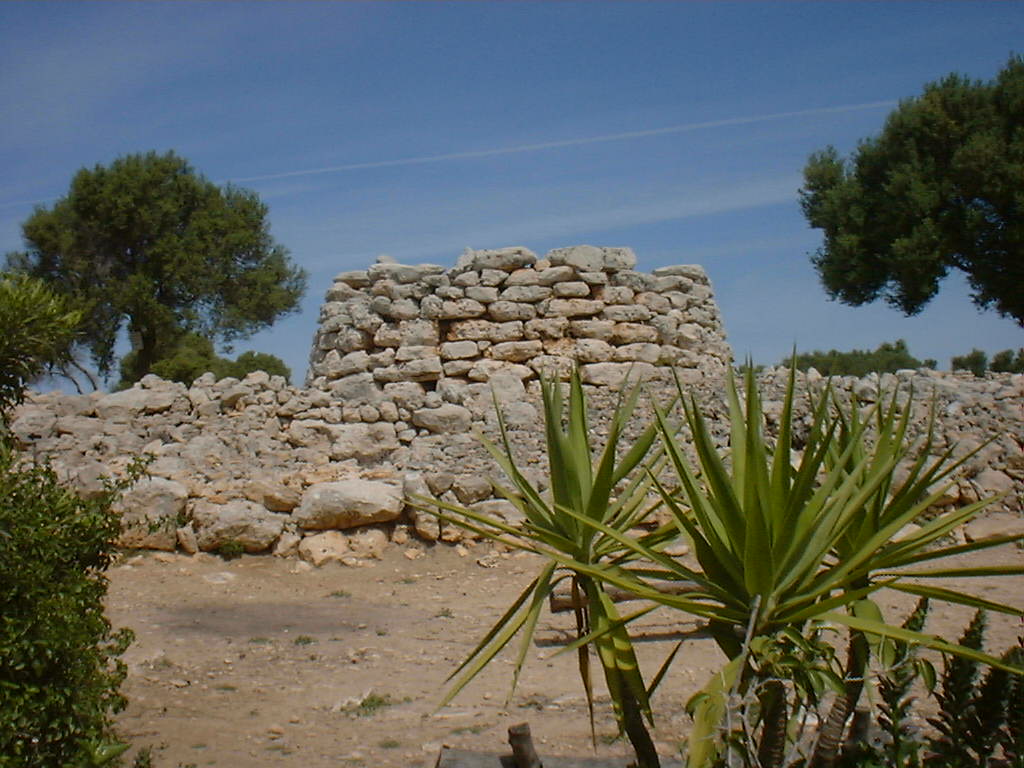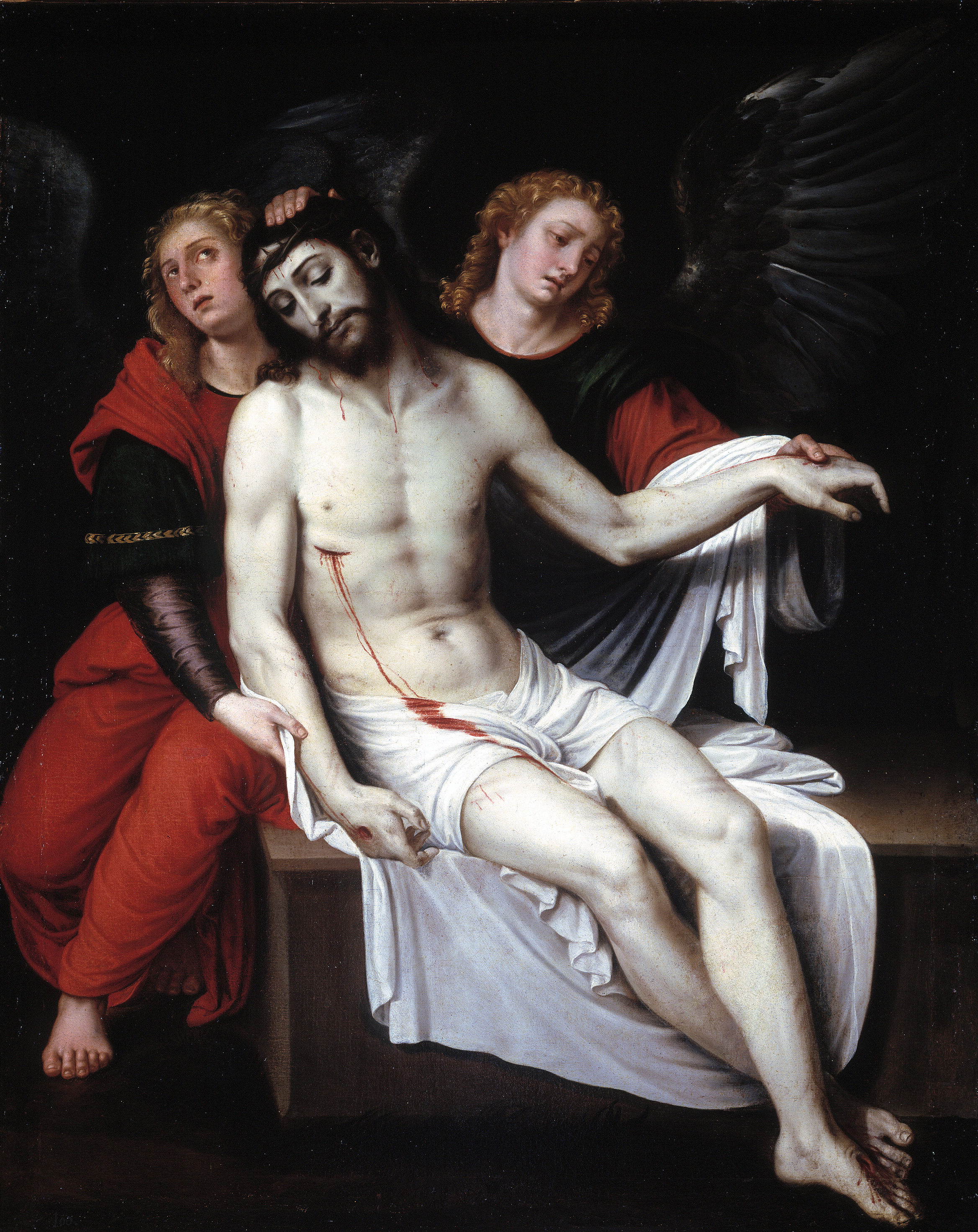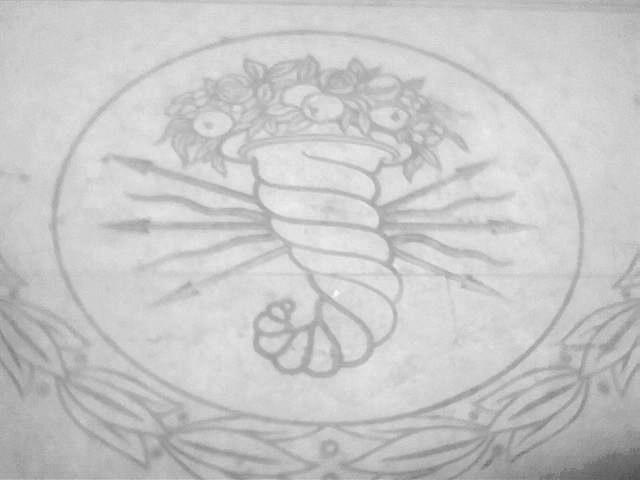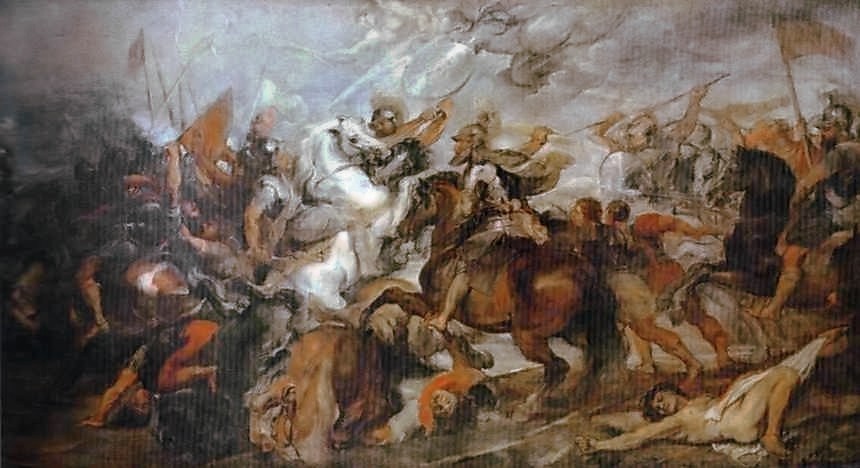|
Gregorio Bausá
Gregorio Bausá (1590–1656) was a Spanish painter of the Baroque period. Born in the island of Majorca in the village of Sóller to Juan Bausá, he was baptized on August 23 the same year. He was a nephew of Simón Bausá Sales who became bishop of Majorca in 1607. He was the pupil of Francisco Ribalta, and painted devotional paintings. He died in Valencia. References * *Antonio Palomino, ''An account of the lives and works of the most eminent Spanish painters, sculptors and architects ''An account of the lives and works of the most eminent Spanish painters, sculptors and architects'' is a book written by the Spanish painter Antonio Palomino and dedicated to the biographies of the most eminent artists who worked in Spain durin ...'', 1724, first English translation, 1739, p. 40 {{DEFAULTSORT:Bausa, Gregorio 1590 births 1656 deaths Spanish Baroque painters People from Sóller Painters from the Balearic Islands ... [...More Info...] [...Related Items...] OR: [Wikipedia] [Google] [Baidu] |
Baroque
The Baroque ( , , ) is a Western Style (visual arts), style of Baroque architecture, architecture, Baroque music, music, Baroque dance, dance, Baroque painting, painting, Baroque sculpture, sculpture, poetry, and other arts that flourished from the early 17th century until the 1750s. It followed Renaissance art and Mannerism and preceded the Rococo (in the past often referred to as "late Baroque") and Neoclassicism, Neoclassical styles. It was encouraged by the Catholic Church as a means to counter the simplicity and austerity of Protestant architecture, art, and music, though Lutheran art#Baroque period, Lutheran Baroque art developed in parts of Europe as well. The Baroque style used contrast, movement, exuberant detail, deep color, grandeur, and surprise to achieve a sense of awe. The style began at the start of the 17th century in Rome, then spread rapidly to the rest of Italy, France, Spain, and Portugal, then to Austria, southern Germany, Poland and Russia. By the 1730s, i ... [...More Info...] [...Related Items...] OR: [Wikipedia] [Google] [Baidu] |
Majorca
Mallorca, or Majorca, is the largest of the Balearic Islands, which are part of Spain, and the List of islands in the Mediterranean#By area, seventh largest island in the Mediterranean Sea. The capital of the island, Palma, Majorca, Palma, is also the capital of the autonomous communities of Spain, autonomous community of the Balearic Islands. The Balearic Islands have been an autonomous region of Spain since 1983. There are two small islands off the coast of Mallorca: Cabrera, Balearic Islands, Cabrera (southeast of Palma) and Dragonera (west of Palma). The anthem of Mallorca is "La Balanguera". Like the other Balearic Islands of Menorca, Ibiza, and Formentera, the island is a highly popular holiday destination, particularly for tourists from the Netherlands, Republic of Ireland, Ireland, Germany, and the United Kingdom. The international airport, Palma de Mallorca Airport, is one of the busiest in Spain; it was used by 28 million passengers in 2017, with use increasing ever ... [...More Info...] [...Related Items...] OR: [Wikipedia] [Google] [Baidu] |
Sóller
Sóller () is a town and municipality near the north west coast of the Balearic Island of Mallorca, Spain, 3 km inland from Port de Sóller, in a large, bowl-shaped valley that also includes the village of Fornalutx and the hamlets of Biniaraix and Binibassi. The population is around 14,000. The ''Tranvía de Sóller'' tram links Sóller to Port de Sóller. Overview Sóller is linked by the historic railway, the Ferrocarril de Sóller, and by a highway with a tunnel, to the Majorcan capital of Palma. The Ferrocaril was built on the profits from the orange and lemon trade and completed in 1911. The Andratx-Pollença highway also runs through the valley. The present-day economy is based mainly on tourism and the expenditure of foreign residents, complementary to the agricultural economy based around citrus and olive groves. Soller is unique compared to towns on the rest of the island due to its geographical isolation, being surrounded by the Serra de Tramuntana. This isolatio ... [...More Info...] [...Related Items...] OR: [Wikipedia] [Google] [Baidu] |
Francisco Ribalta
Francesc Ribalta (2 June 1565 – 12 January 1628), also known as ''Francisco Ribaltá'' or ''de Ribalta'', was a Spanish painter of the Baroque period, mostly of religious subjects. Biography He was born in Solsona, Lleida. Although his first apprenticeship was apparently with Navarrete, who worked for years in the Escorial, Ribalta's earliest work (a ''Cruxifixion'' of 1582) was signed in Madrid. After his years in Madrid, Ribalta was to settle as an artist in Valencia. He became among the first followers in Spain of the austere tenebrist style of Caravaggio. It is unclear if he directly visited either Rome or Naples, where Caravaggio's style had many adherents. Alternatively, it is likely that tenebrist paintings were available in Spain by the early 17th century through the Spanish rule of the Neapolitan kingdom. Jusepe de Ribera is said to have been one of his pupils, although it is entirely possible that Ribera acquired his tenebrism when he moved to Italy. Style ... [...More Info...] [...Related Items...] OR: [Wikipedia] [Google] [Baidu] |
Valencia, Spain
Valencia ( , ), formally València (), is the capital of the Province of Valencia, province and Autonomous communities of Spain, autonomous community of Valencian Community, the same name in Spain. It is located on the banks of the Turia (river), Turia, on the east coast of the Iberian Peninsula on the Mediterranean Sea. It is the Ranked lists of Spanish municipalities, third-most populated municipality in the country, with 825,948 inhabitants. The urban area of Valencia has 1.5 million people while the metropolitan region has 2.5 million. Valencia was founded as a Roman Republic, Roman colony in 138 BC as '. As an autonomous city in late antiquity, its militarization followed the onset of the threat posed by the Spania, Byzantine presence to the South, together with effective integration to the Visigothic Kingdom of Toledo in the late 6th century. Al-Andalus, Islamic rule and acculturation ensued in the 8th century, together with the introduction of new irrigation syst ... [...More Info...] [...Related Items...] OR: [Wikipedia] [Google] [Baidu] |
Antonio Palomino
Acislo Antonio Palomino de Castro y Velasco (165513 April 1726) was a Spanish painter of the Baroque period, and a writer on art, author of ''El Museo pictórico y escala óptica'', which contains a large amount of important biographical material on Spanish artists. Life Antonio Palomino was born to a respectable family at Bujalance, near Córdoba in 1655. He studied philosophy, theology and law at Córdoba, and had lessons in painting from Juan de Valdés Leal, who visited there in 1672, and afterwards from Juan de Alfaro y Gamez in 1675. After taking minor orders Palomino moved to Madrid in 1678, where he associated with Alfaro, Claudio Coello, and Juan Carreño de Miranda, and executed some indifferent frescoes. He soon afterwards married a lady of rank, and, having been appointed ''alcalde'' of the ''mesta'', was himself ennobled; in 1688 he was appointed painter to King Charles II.The artist visited Valencia in 1697 and remained there for three or four years, dev ... [...More Info...] [...Related Items...] OR: [Wikipedia] [Google] [Baidu] |
An Account Of The Lives And Works Of The Most Eminent Spanish Painters, Sculptors And Architects
''An account of the lives and works of the most eminent Spanish painters, sculptors and architects'' is a book written by the Spanish painter Antonio Palomino and dedicated to the biographies of the most eminent artists who worked in Spain during the so-called Siglo de Oro, the golden age of Spanish art. It was published for the first time in the original Spanish edition in 1724, entitled ''El parnaso español pintoresco y laureado'' and appearing as the third and last volume of Palomino's ''El museo pictorico y escala optica'', featuring also biographies of Italian artists who worked in Spain (Pietro Torrigiano, Tiziano, Sofonisba Anguissola, Federico Zuccari, Luca Giordano and many others) as well as Flemish artists (Antonio Moro, Pieter Paul Rubens). The book includes the first biographies ever published of many Spanish artists, Diego Velázquez among others, and was translated and published in English, French and German during the 18th century; the English translation appear ... [...More Info...] [...Related Items...] OR: [Wikipedia] [Google] [Baidu] |
1590 Births
Events January–March * January 6 – García Hurtado de Mendoza becomes the new Viceroy of Peru (nominally including most of South America except for Brazil). He will serve until 1596. * January 10 – Construction of the Fortezza Nuova around the city of Livorno begins in Italy in the Grand Duchy of Tuscany on the orders of Ferdinando I de' Medici, Grand Duke of Tuscany and continues for more than 14 years. * January 25 – Luis de Velasco y Castilla, Marquess of Salinas, becomes the new Viceroy of New Spain, a colony comprising most of Central America, Mexico and what is now a large part of the southwestern United States. Velasco will govern until 1595, and then again from 1607 to 1611. * February 3 – Peter Ernst I von Mansfeld-Vorderort, the German-born commander of the Spanish Imperial Army captures the German fortress of Rheinberg after a four-year long siege during the Eighty Years' War. * March 4 – Maurice of Nassau, Prince of ... [...More Info...] [...Related Items...] OR: [Wikipedia] [Google] [Baidu] |
1656 Deaths
Events January–March * January 5 – The First War of Villmergen, a civil war in the Old Swiss Confederacy, Confederation of Switzerland pitting its Protestant and Roman Catholic Swiss canton, cantons against each other, breaks out but is resolved by March 7. The Lutheran cantons of the larger cities of Zurich, Bern and Schaffhausen battle against seven Catholic cantons of Lucerne, Schwyz, Uri, Zug, Baden Unterwalden (now Obwalden and Nidwalden) and St. Gallen. * January 17 – The Treaty of Königsberg (1656), Treaty of Königsberg is signed, establishing an alliance between Charles X Gustav of Sweden and Frederick William, Elector of Brandenburg. * January 24 – The first Jewish doctor in the Thirteen Colonies of America, Jacob Lumbrozo, arrives in Maryland. * January 20 – Reinforced by soldiers dispatched by the Viceroy of Peru, Colonial Chile, Spanish Chilean troops defeat the indigenous Mapuche warriors in a battle at San Fabián de Conuco in w ... [...More Info...] [...Related Items...] OR: [Wikipedia] [Google] [Baidu] |
Spanish Baroque Painters
Spanish might refer to: * Items from or related to Spain: **Spaniards are a nation and ethnic group indigenous to Spain **Spanish language, spoken in Spain and many countries in the Americas ** Spanish cuisine ** Spanish history ** Spanish culture **Languages of Spain, the various languages in Spain Other places * Spanish, Ontario, Canada * Spanish River (other), the name of several rivers * Spanish Town, Jamaica Other uses * John J. Spanish (1922–2019), American politician * "Spanish" (song), a single by Craig David, 2003 See also * * * Español (other) * Spain (other) * España (other) * Espanola (other) * Hispania, the Roman and Greek name for the Iberian Peninsula * Hispanic, the people, nations, and cultures that have a historical link to Spain * Hispanic (other) * Hispanism * Spain (other) * National and regional identity in Spain * Culture of Spain The culture of Spain is influenced by its Wes ... [...More Info...] [...Related Items...] OR: [Wikipedia] [Google] [Baidu] |
People From Sóller
The term "the people" refers to the public or common mass of people of a polity. As such it is a concept of human rights law, international law as well as constitutional law, particularly used for claims of popular sovereignty. In contrast, a people is any plurality of persons considered as a whole. Used in politics and law, the term "a people" refers to the collective or community of an ethnic group or nation. Concepts Legal Chapter One, Article One of the Charter of the United Nations states that "peoples" have the right to self-determination. Though the mere status as peoples and the right to self-determination, as for example in the case of Indigenous peoples (''peoples'', as in all groups of indigenous people, not merely all indigenous persons as in ''indigenous people''), does not automatically provide for independent sovereignty and therefore secession. Indeed, judge Ivor Jennings identified the inherent problems in the right of "peoples" to self-determination, as i ... [...More Info...] [...Related Items...] OR: [Wikipedia] [Google] [Baidu] |






